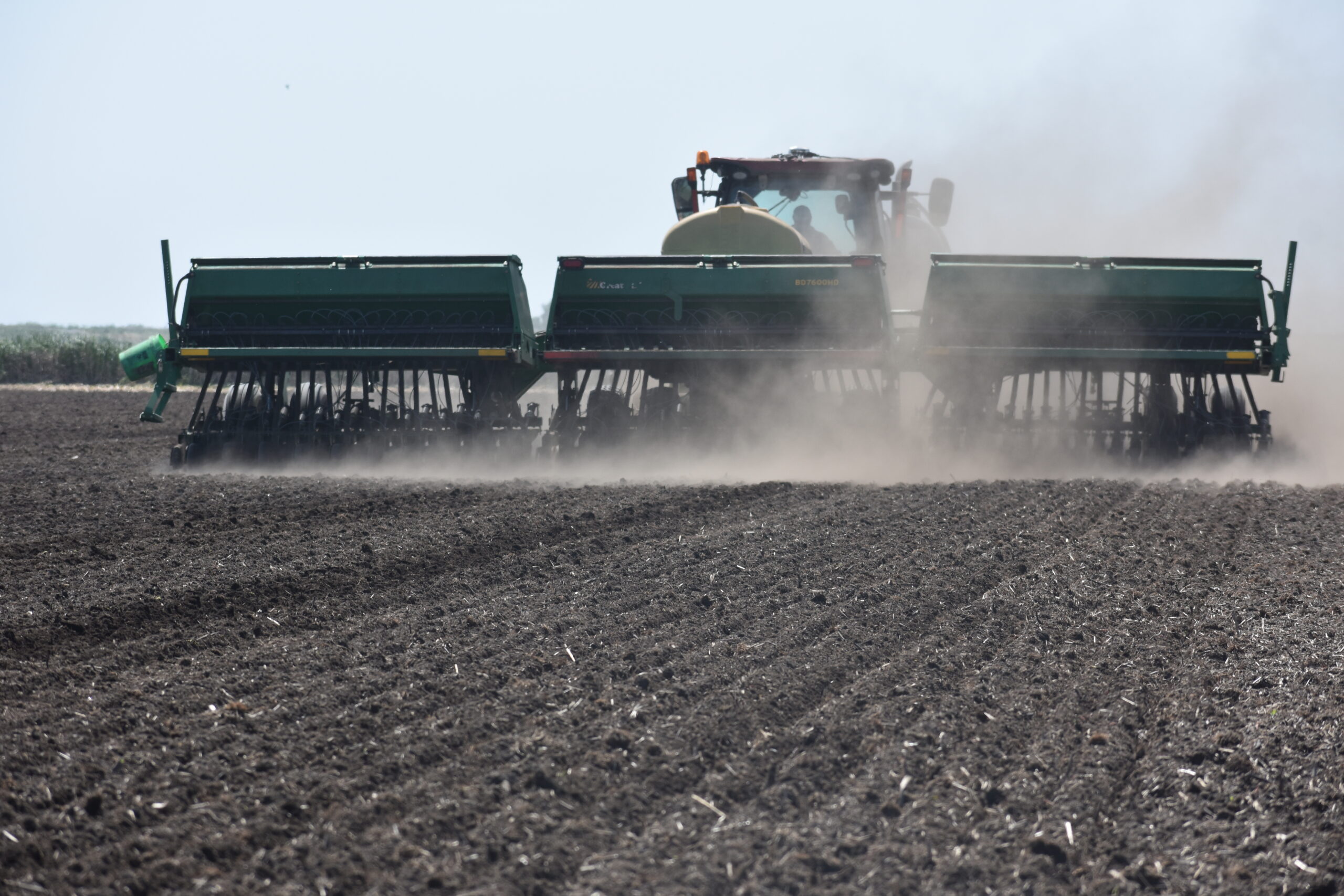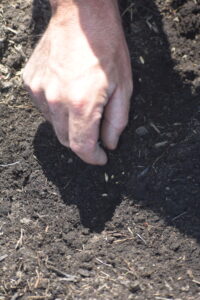Growing Together Summer 2025
Drilling Down
How regional challenges shaped a more sustainable way to grow rice
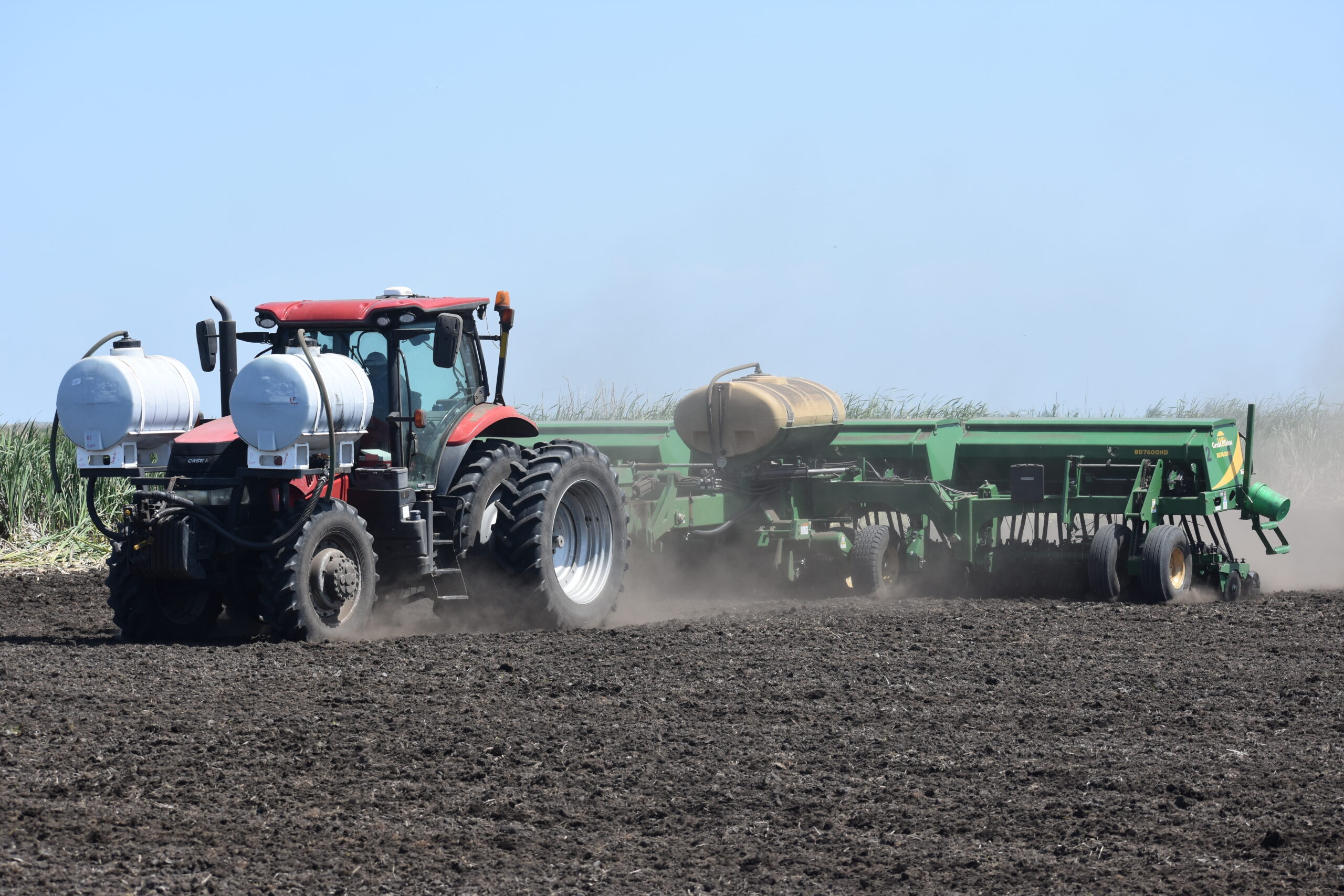
The California Rice Commission has promoted California rice as “The Environmental Crop.” An increasing number of producers in the Sacramento-San Joaquin River Delta have taken that to heart and continue to transition corn and alfalfa acres to rice because of the myriad environmental and economic benefits it provides.
“There’s been a major expansion out here in the Delta with the help of The Nature Conservancy,” said Doug Grupe, a Grow West pest control advisor based at the Walnut Grove branch.
Grupe has been at the forefront of helping Delta growers and the conservancy’s farming arm, Conservation Farms & Ranches, transition to rice. Because of the Delta’s unique conditions, rice producers have had to adopt a drill-seeded cultural system more like what’s used in the South and Mid-South rather than the water-seeded practices of Northern California.
“We had to figure this all out ourselves; it’s been a learning curve,” Grupe said. “But we’ve got it down now.”
Earlier this year, The Nature Conservancy – in collaboration with the Sacramento-San Joaquin Delta Conservancy – launched the Delta Rice Conversion Incentive Program. The goal is to recruit growers of other crops, such as corn or wheat, to voluntarily convert to rice and manage fields as high-quality migratory bird habitat. In return, they receive a per-acre payment. Already, one of Grupe’s customers plans to transition 1,300 acres into rice over the next two years.
STATEN ISLAND EVOLUTION
Nowhere is this rice evolution more apparent than on Staten Island, where The Nature Conservancy, which owns the island, has converted over half of its 9,200 acres to the crop. And more are in the works, said Jerred Dixon, director and president of Conservation Farms & Ranches.
“When we started in 2018-2019, we had about 350 acres of rice,” he said. “Since then, we have about 4,500 acres converted and we have a push to get more farmers involved.
“For me, doing rice benefits the soil because I’m not losing elevation in the peat, and we’re not putting as much stress on the levees, mitigating flood risks.”
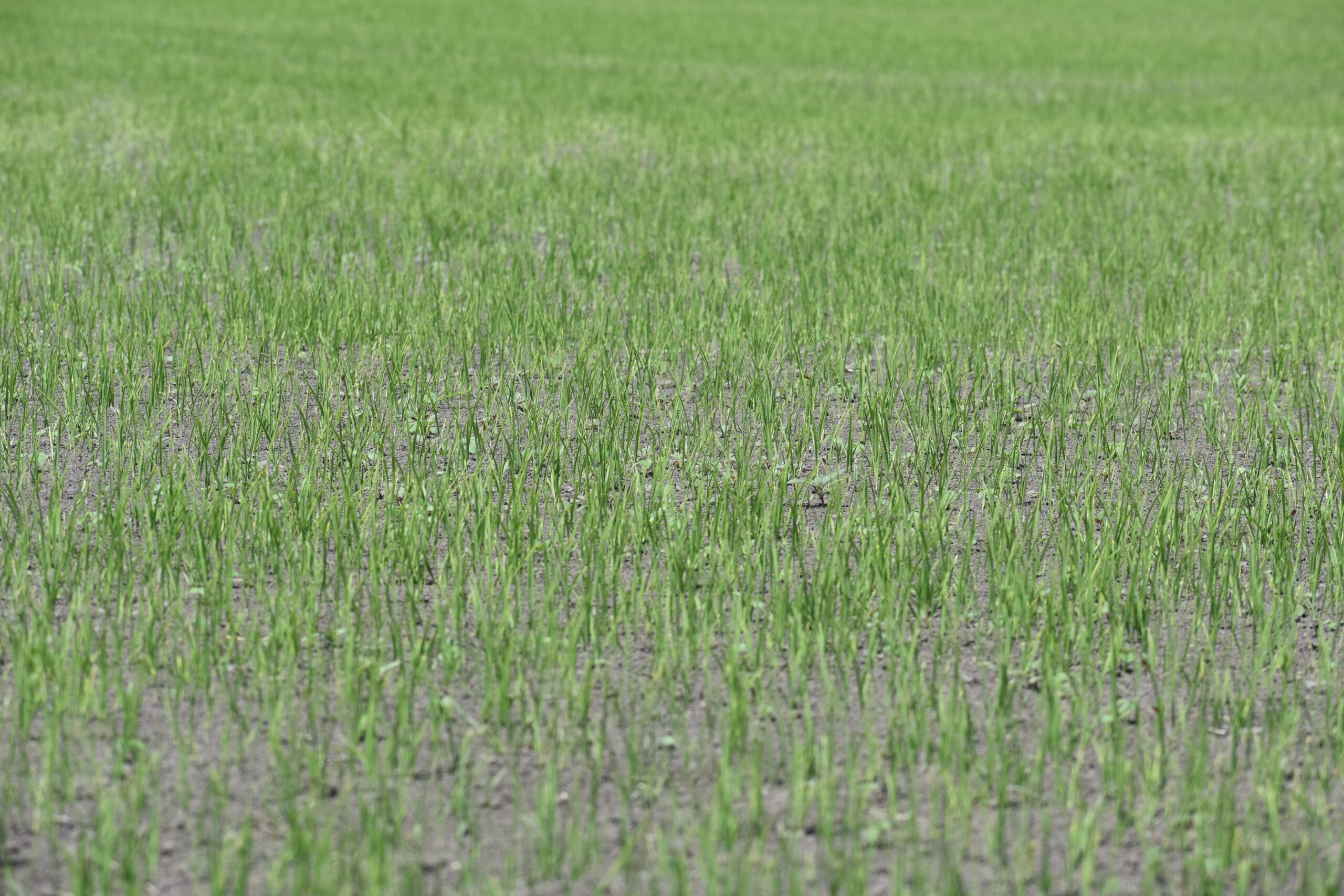
That doesn’t count the crop’s advantages for the thousands of birds that use the Delta year-round or spend the winter before they migrate back north.
Throughout the five-county Delta region, there are about 20,000 acres of rice, according to county crop reports. That compares to 485,000 acres planted statewide in 2025.
Dixon said he wouldn’t be surprised to see Delta rice production eventually reach 30,000-50,000 acres. Should that occur, yields could probably support establishing a local cooperative, rice dryer and mill.
UNIQUE DELTA CONDITIONS
Unlike traditional rice-producing areas in Northern California that frequently have clay soils, the islands of the Delta are composed of carbon-rich organic peat soils. Under aerobic or oxygen-rich conditions, peat soils quickly oxidize, resulting in land subsidence. This accelerated as islands were reclaimed by draining and levee construction, and row crops were cultivated.
In the developed islands of the central and western Delta, subsidence averages 1-3 inches per year, according to U.S. Geological Survey (USGS) figures. On Staten Island, Dixon said many of his fields are as much as 20-25 feet below sea level.
But flooded conditions, such as those used to grow rice, promote an anaerobic or oxygen-deficient environment. The roughly 4-12 inches of water maintained in season protect the peat soils from oxidation, slow land subsidence and mitigate soil carbon loss.
Reflooding rice fields after harvest continues the trend while also helping decompose leftover straw and providing winter waterfowl habitat.
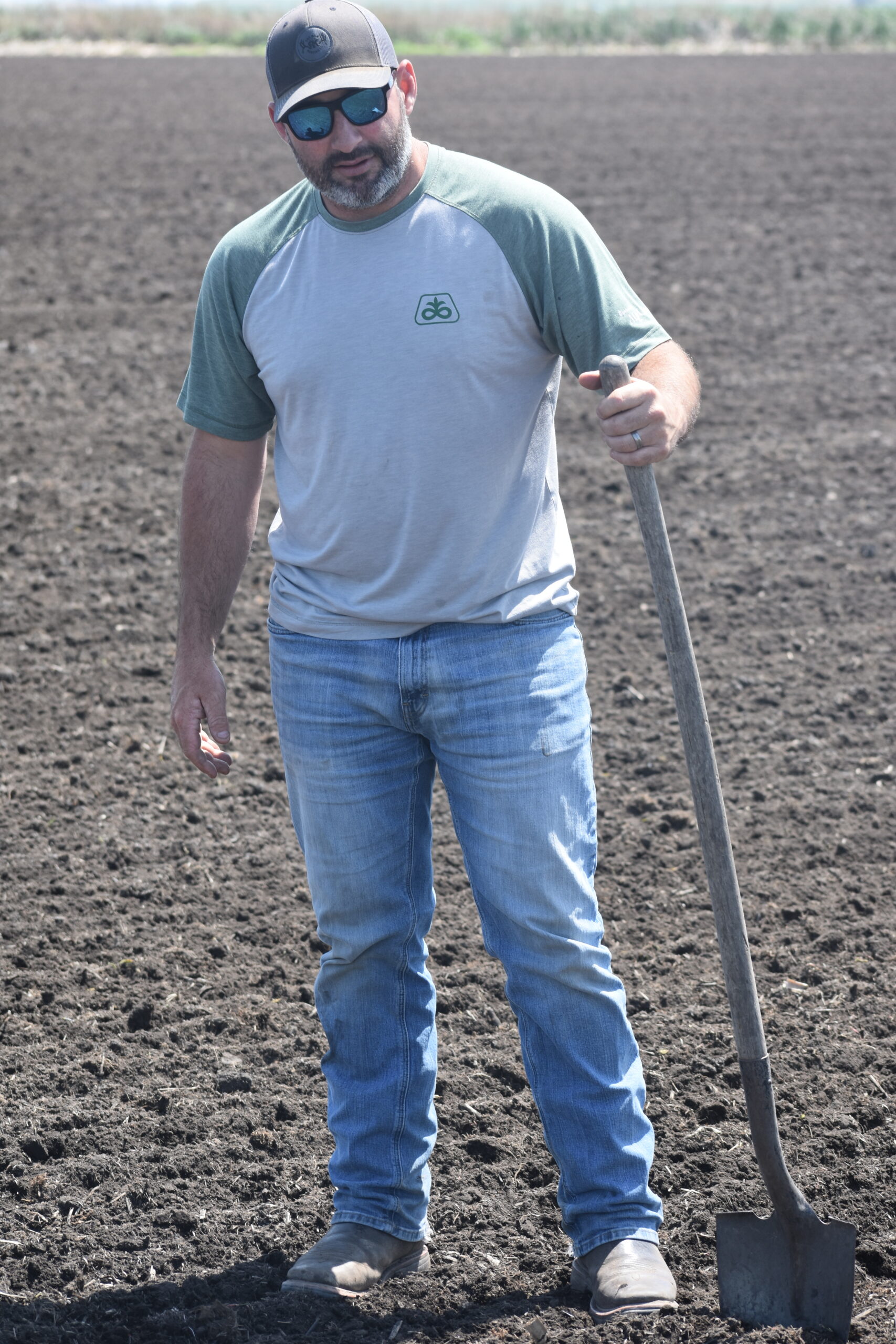
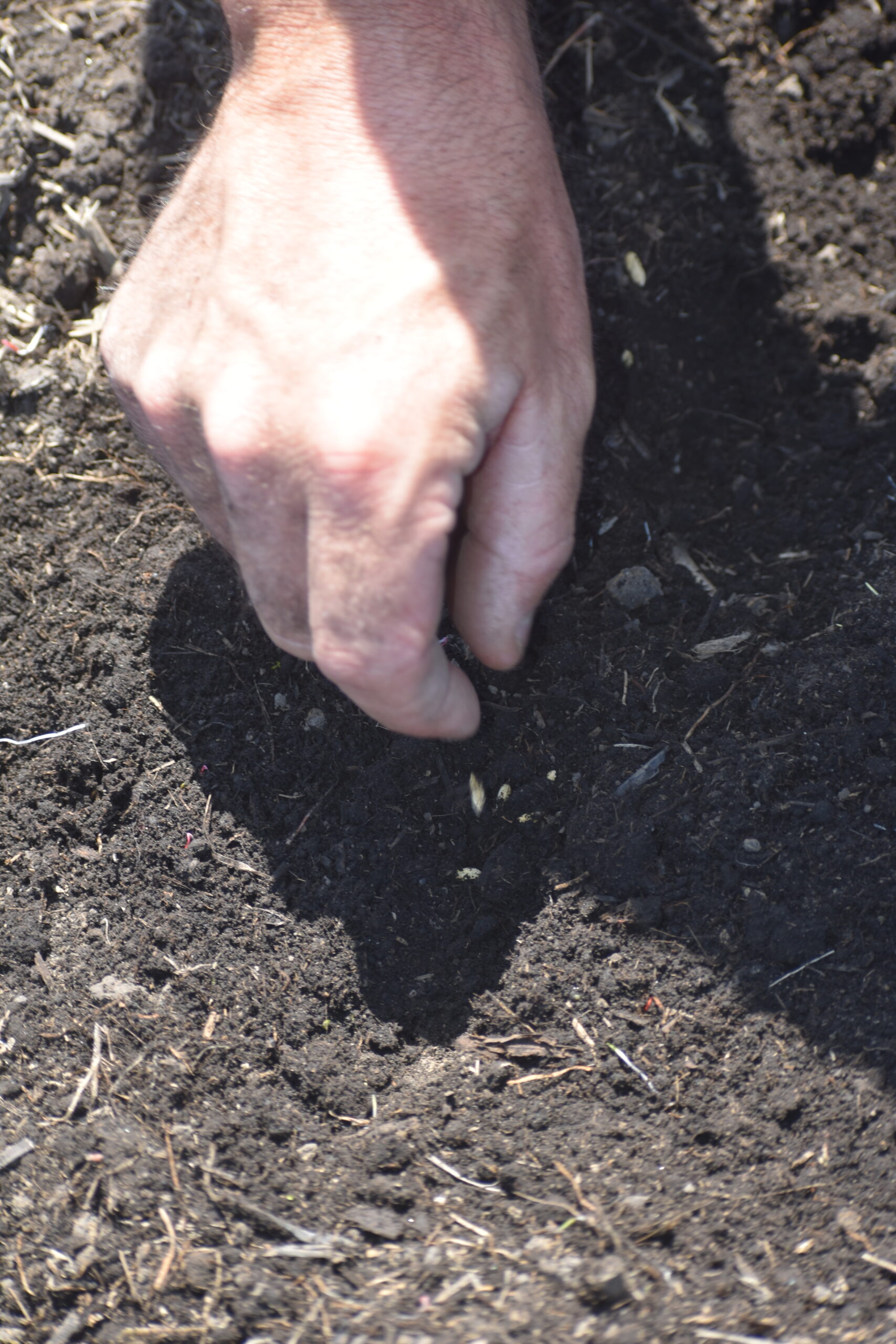
PERFECTING DRILL SEEDING
Field preparation begins in early March after water is pumped off of fields and the field surface allowed to dry. Dixon takes a minimum-tillage approach, only lightly disking soil a few times to maintain organic matter left from the previous crop.
This differs from the deep ripping and chiseling that many Sacramento Valley rice producers use to dry out and prepare fields for planting.
One of the biggest differences with Delta rice is drill seeding, which is the same method used to plant corn, wheat
and other row crops.
Sacramento Valley rice producers soak rice seed, and the pregerminated seed is flown on flooded fields. With typically windy conditions during planting, Dixon said any rice seed flown into flooded Delta fields would likely end up blown to one end of the field and result in clumping and uneven stands.
As an alternative, Dixon enlists a 30-foot-wide Great Plains grain drill to plant 150-170 pounds per acre of dry seed. The shallow discing and rolling of fields in early spring seals the soil to preserve moisture to germinate planted rice seed.
Dixon grows mostly M-206 medium-grain rice with a bit of M-105 medium grain. This season, he’s trying some high-yielding M-211 medium grain as well as about 20 acres of Koshihikari short-grain as an experiment.
Although the Delta has a long growing season, temperatures average a few degrees cooler than the Sacramento Valley, limiting rice variety choices. Many won’t reach full yield potential in the cooler production areas.
Dixon has seen his best yields when he plants early, on or before April 1, and averages about 95 100-pound sacks per acre. He likes to have everything in the ground by May 10, which allows him to finish harvest before Nov. 1.
DELTA CHALLENGES
Dixon applies granular nitrogen with the last pass of implements during field preparation and a liquid starter at planting. This is counter to Sacramento Valley producers, who typically shank in aqua ammonia just prior to flooding and water seeding.
As the rice reaches the three- to four-leaf stage, Dixon treats the fields with herbicides and then applies a permanent flood of 4-12 inches of water.
Watergrass tends to be the most troublesome weed, and Grupe said the regular program involves two applications of propanil. Weather, particularly wind and temperature, poses the biggest challenge in making timely herbicide applications.
“Sometimes you’re ready to spray and it’s in the 70s, so you know the propanil isn’t going to work,” he said.
This year in particular, Grupe said the 20-30 mph winds frequently grounded aerial applicators for 7-10 days.
“This year we got way behind and we never caught up.”
Weeds are one reason why Dixon uses a 5-year crop rotation to try to switch things up and bring in new chemistries.
“Sometimes it’s fallow, sometimes it’s corn — it just depends on how I have things set up,” he said. “We’ve already converted into a rotation of corn and then back to rice. It almost resets the clock for us on the herbicide rates.”
At panicle initiation — the transition from the vegetative to productive stage — Dixon has a plane fly on topdress nitrogen. Altogether, he uses about half the nitrogen of rice producers to the north because of the Delta’s naturally nutrient-rich soils.
SUMMER NESTING HABITAT
During the season, Dixon said the flooded rice fields offer “almost perfect” nesting and brooding habitat for several duck species, including mallards, gadwall and cinnamon teal. Black-crowned night herons, great blue herons and white egrets also frequent the fields.
“As we see it, the survivability of the broods we have had here are just tremendous,” he said, citing ongoing studies.
Another challenge with Delta rice comes when fields need to be drained to dry down plants for harvest. With moisture continuing to sub up, draining may take 1-2 weeks longer than the Sacramento Valley. Even then, rice plants may remain green, prompting applications of sodium chloride – sometimes referred to as salting the rice – to dry the grains in the panicle.
Dixon targets about 18% grain moisture for harvest. Because of slow grain drying, fissuring and cracking is reduced, resulting in better grain quality. Dixon said his milling yields average 68-72, which refers to whole kernels and overall rice, respectively. Head rice nets a significantly better price than brokens or pieces.
WINTER WATERFOWL HABITAT
Shortly after harvest, Dixon chops the rice straw, leaving the biomass on the surface, and refloods the fields for winter waterfowl and straw decomposition. He staggers water applications, beginning about Nov. 1 and finishing in late December, to provide an array of habitat for different species.
The GPS leveling used for rice fields also lends itself to flooded winter habitat management, he said. In the past, an unleveled 100-acre field, for example, might have only 10 acres around the edges that were suitable waterfowl habitat when flooded.
But using GPS leveling technology yields about 90 acres of suitable habitat in that same 100-acre example.
No combine is 100% efficient, and a small portion of the crop is spit out the back along with straw. The leftover grain provides nutrient-dense food for visiting ducks and geese.
Along the field borders, Dixon also plants corn and milo, which supply high-caloric food for overwintering waterfowl. He said it’s not unusual to see thousands of geese, including Aleutian cackling geese, on Staten Island. And night herons and white egret populations have exploded in the region.
“It’s just kind of amazing to see the kind of biodiversity we have seen. It’s just changed so much,” he said.
ECONOMIC SUSTAINABILITY
The Delta also is the wintering ground to about 25%-30% of the Pacific Flyway’s greater sandhill crane population.
Research conducted by Oregon State University and USGS found the long-legged birds prefer roosting in water depths averaging 4 inches. They also sought undisturbed flooded cropland sites.
“Sandhill cranes are very particular about the depth of water they like to roost in,” Dixon said.
White-faced ibis, on the other hand, like muddy edges of flooded fields or wetlands where they can probe for invertebrates. And shorebirds, such as plovers and stilts, prefer mudflats in which to wade and forage.
Dixon said the environmental benefits rice provides the Delta are just part of the overall sustainability equation. The crop also has an economic upside by offering potentially better grower returns than corn in most years.
“We get paid a lot more per sack, but there are good years and bad years,” he said about rice. “But corn has more bad years. We pour a lot of this money into corn and don’t get anything for it.”
